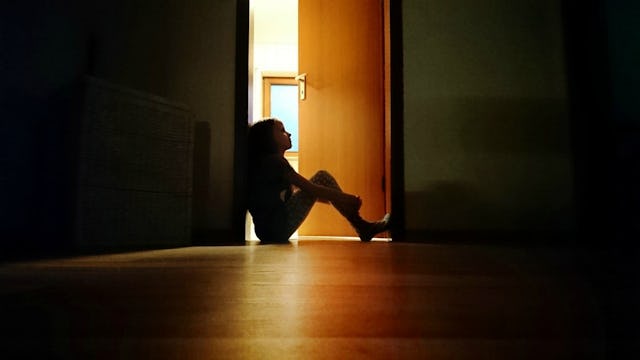Why Mindfulness May Not Be Appropriate For All Students

My therapist first introduced me to meditation and mindfulness, and I’ll admit, I didn’t care much for it. She suggested an app and told me to try for a couple weeks. I didn’t really know what to expect. I downloaded the app, and then spent the next several nights listening to a man with a delightful British accent talk me through how to become more aware of my feet, hands, legs, stomach.
Meditation and mindfulness in general is a way for us all to take a moment out of the day and attempt to turn off our brains. It can also help with anxiety, depression, focus, sleep, and a number of other mental health concerns. Regardless of how I personally felt about mindfulness, I cannot help but notice that it is THE hot new trend and it is proven to work for most people. It’s also being used regularly in classrooms across the United States, so chances are, even if you aren’t practicing it, your children are.
For those of you who are new to the idea, or have never tried it, mindfulness and meditation are a way to quiet the noise in our brains. For some, I have to assume mindfulness is easy. But for me, a man who often can’t sleep because ALL the thoughts are in his head, mindfulness can be a struggle. I did it for a couple weeks, as recommended, and I literally sat there and thought about how I wasn’t supposed to be thinking. And yes, I know there will be some mindfulness experts out there with tips on how I could do it better, and I thank you in advance; but the simple fact is, some people struggle, and I mean really struggle, with turning off their brain, regardless of their dedication to mindfulness.
But despite all the benefits of mindfulness and meditation, it isn’t a cure-all and it doesn’t work for everyone. In fact, for some people, mindfulness can actually be a hinderance to mental health.
According to a recent NPR story, my struggles with mindfulness weren’t nearly as difficult as a child who has experienced trauma.
Sam Himelstein, a clinical psychologist, trainer and author who has spent most of his career working with incarcerated youth, helps teachers who get upset when students don’t want to engage in mindfulness a certain way. What he’s noticed is that students who have experienced trauma struggle with mindfulness for a number of different reasons, and much of it has to do with trust.
Building an authentic relationship is key to accessing the trust required to make mindfulness effective. For some kids, chaos is part of trauma so when adults are unpredictable they can’t be trusted. That’s why being a “predictable adult” is a good way to be authentic with kids. So when a teacher begins each day with mindfulness, and a student who has experienced trauma is asked to close their eyes for someone they don’t know, and don’t trust, they resist.
They resist hard.
They act out. They talk back. They disengage.
Closing your eyes is a big part of mindfulness, and Himelstein mentions how that one practice can be very difficult for a trauma survivor.
I work for a university, and during the summer I run bridge programs for our student athletes. These are transitional programs for new freshmen, and one of our instructors leads a lesson on mindfulness. I’ve observed it a number of times, and I’ve seen a range responses, from exhausted student athletes slumping their head forward and going to sleep, to some clearly grasping the concept of meditation.
But there’s always one or two who just sit there with their eyes wide open, hands gripping the desk, glaring at the instructor, clearly not interested in the activity. Please keep in mind that this is just a small isolated sampling, but I have access to a lot of background information on these students. I’d say 90% of the time those who disengage with mindfulness are the students who have backgrounds that are most likely to include trauma.
Naturally, Himelstein has some recommendations to help students who struggle with mindfulness. I can’t help but assume these would also work for those of you trying to teach your own children this skill at home. For starters, don’t force it. If a child doesn’t want to participate, that’s fine as long as they’re not disrupting the other students who are engaged.
Encourage the student, and give them time to trust you. Also, don’t force children into the logistics, like making them close their eyes. Somatic awareness, like counting breaths, is a great place to start.
Mindfulness doesn’t have to be bitten of in one big bite. “There’s different types of awareness. Sometimes we’re really aware of what’s going on in the mind and sometimes we’re more aware of what’s going on in the body,” Himelstein said.
Think about the child’s window of tolerance and whether they are already triggered or not. “It’s good to strike when the iron is cold in a lot of these cases,” Himelstein added.
But above all, build relationships. Make sure that the student can trust you, and once you have that, practicing mindfulness will come easier.
This article was originally published on